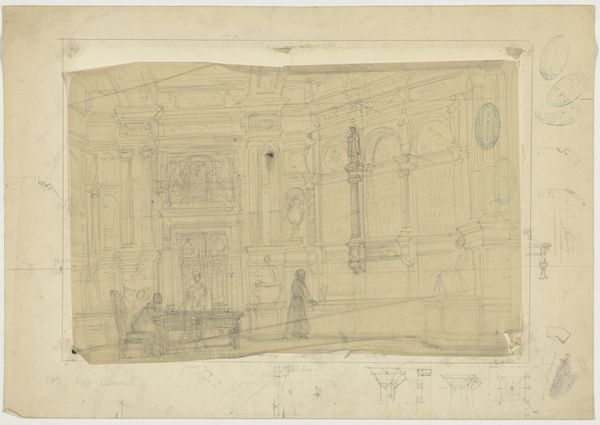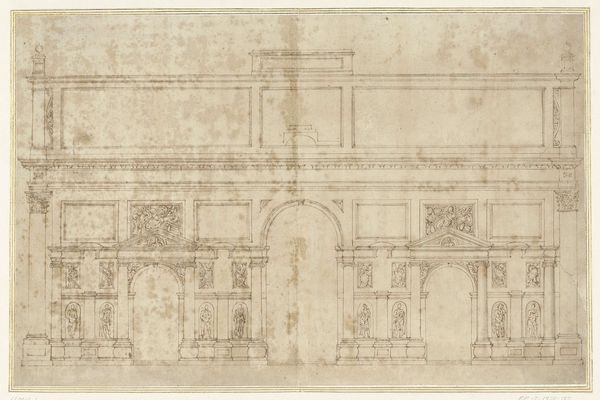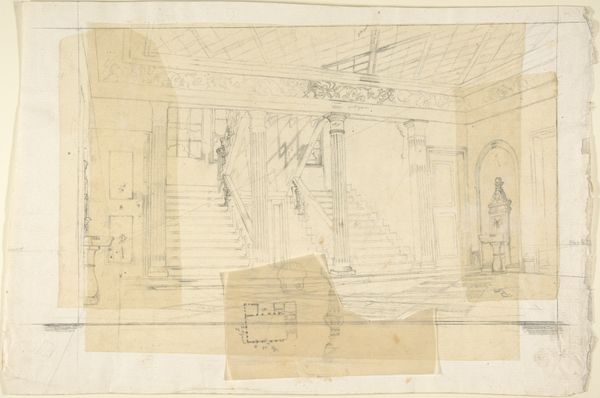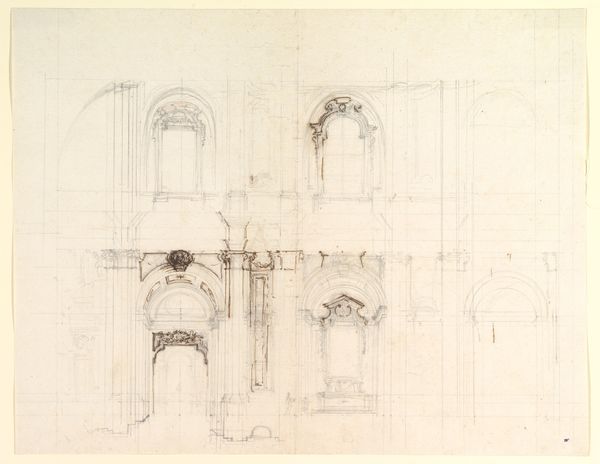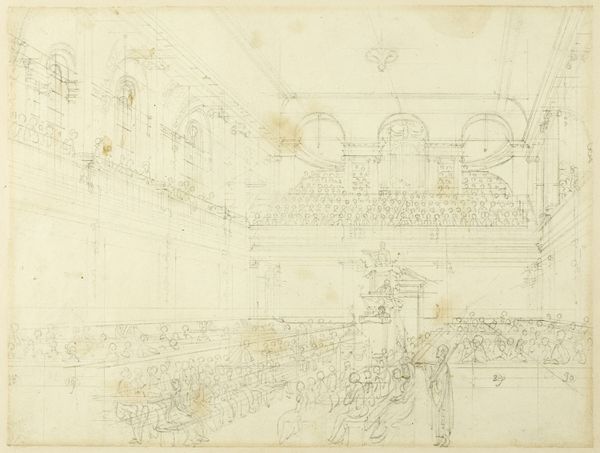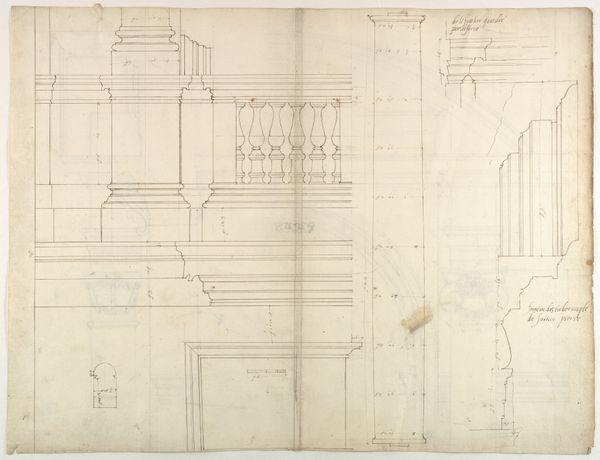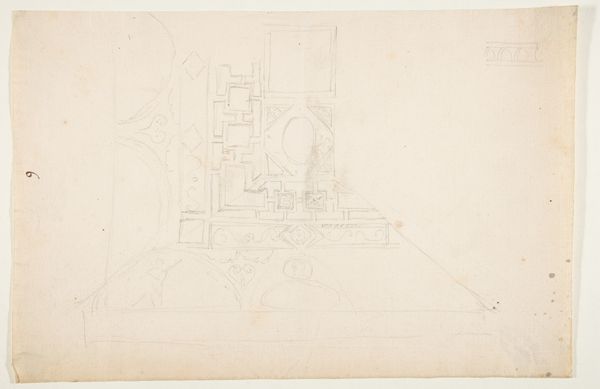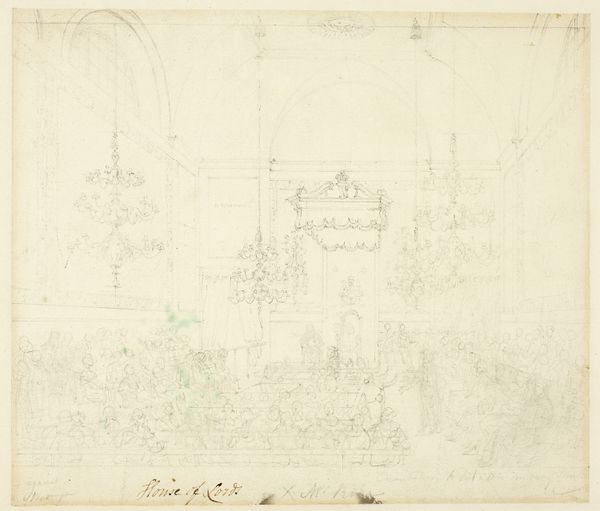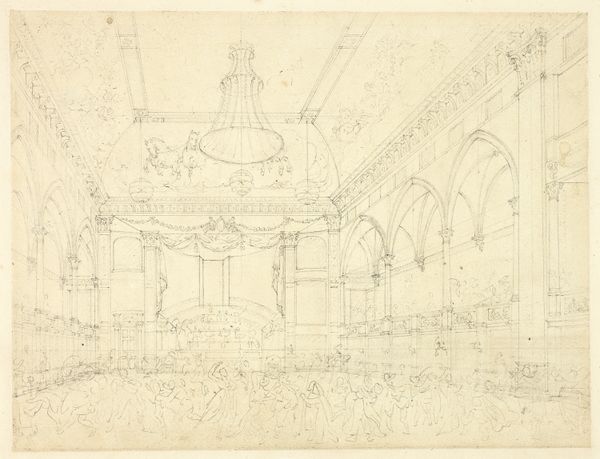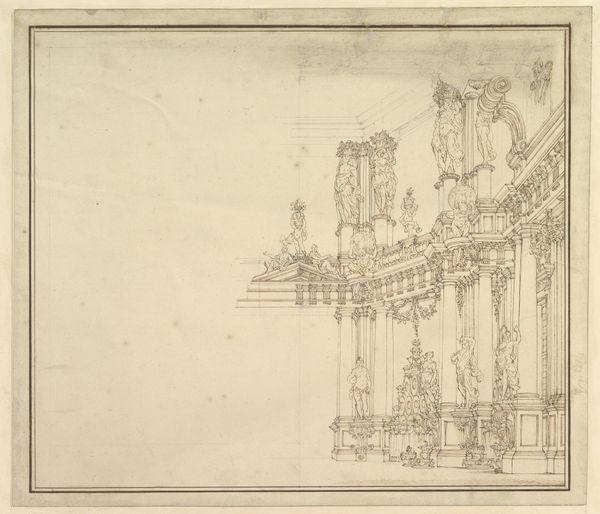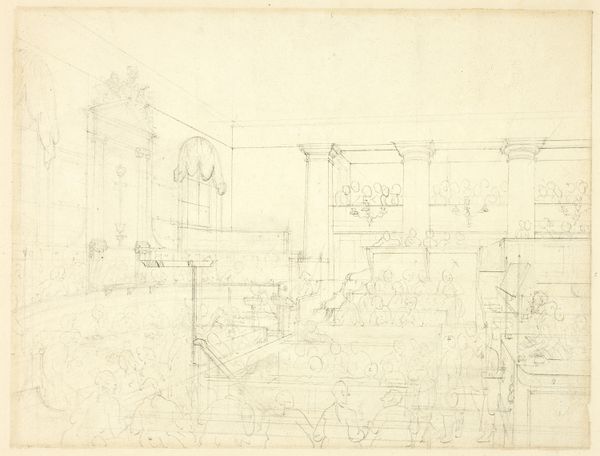
Outline Drawing: Stage Set Design for a Performance of "Iphigenia". Verso: Two Designs for Palace Interiors. 1709 - 1790
0:00
0:00
Dimensions: sheet: 6 5/16 x 8 11/16 in. (16 x 22 cm)
Copyright: Public Domain
Curator: This drawing offers us a glimpse into the world of 18th-century stage design. What you see before you is "Outline Drawing: Stage Set Design for a Performance of 'Iphigenia'. Verso: Two Designs for Palace Interiors" created by Fabrizio Galliari. Editor: It has an air of austere grandeur, wouldn't you say? The use of lines and blank space emphasizes the sheer scale and the cool, classical formality of the depicted architecture. Curator: Exactly! Galliari's neoclassical style evokes that sense of calculated order. Notice how the architectural elements such as arches, columns, and statuary are meticulously rendered. One can tell the artist drew inspiration from the plays of Ancient Greece. Editor: Beyond just architectural accuracy, what do you make of the staging of "Iphigenia" here, historically speaking? How might its interpretation been received in that period? Curator: It would certainly signify a specific interpretation of the ancient world—a revival of those austere, somewhat starkly theatrical spaces. It underscores a fascination with reason, order, and perhaps even the controlled emotionalism associated with neoclassicism as it played out on stage. Editor: So, not just design then but conveying philosophical leanings—very neat. What kind of performance would suit such a structure? It does feel almost cold. Curator: I see your point. There's a theatrical convention that blends reverence and, dare I say, artifice. What is implied may also reflect the social dynamics of the theater. Imagine it populated by nobility seeking not only entertainment, but also reflections of their world order. Editor: The sketch makes me ponder what theatre in this age stood for as cultural spectacle. It highlights a deliberate political usage that is hard to overlook and continues to inform current art dynamics. Curator: Well said, particularly with regard to visual conventions within the neoclassical tradition! It gives new appreciation for understanding the era and how these aesthetics evolved over time. Editor: Indeed! It underscores, again, how the drawing brings awareness to visual motifs throughout historical time periods and their impact on later artistic evolutions.
Comments
No comments
Be the first to comment and join the conversation on the ultimate creative platform.
